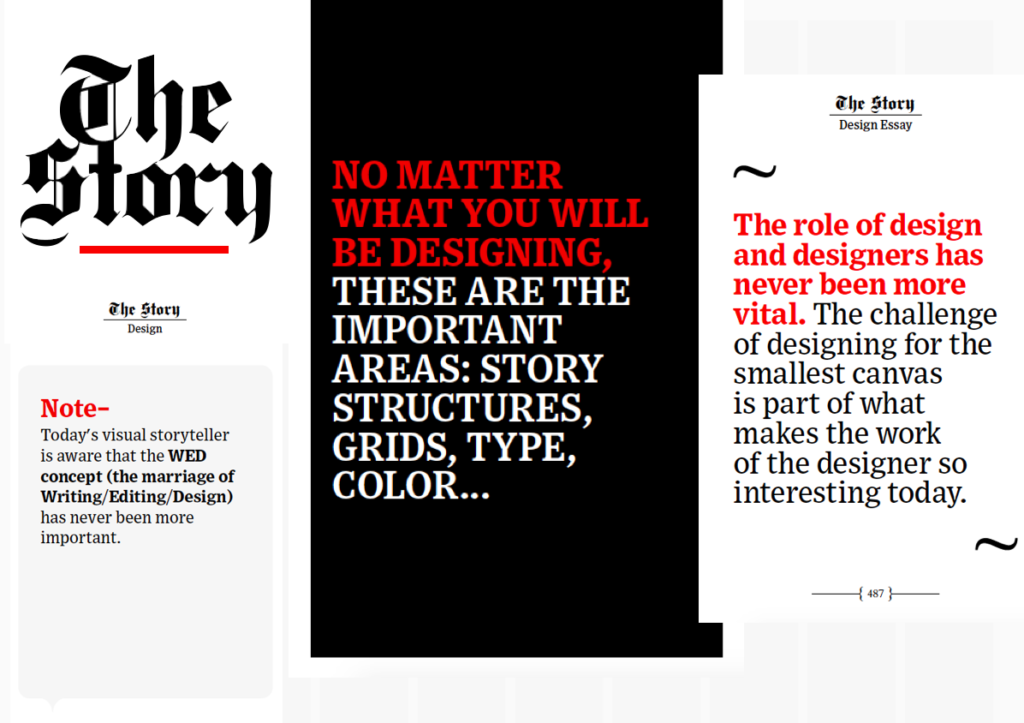I have always had great respect for how Dagens Nyheter (DN) does things, from its journalism, to its design, and now to a real case study of authentic transformation. Disclaimer: I have been a consultant to DN, but not in the very recent past, so I am not involved with any of the great things that are happening there, although I wish I had been!
When transformation is real
It is no wonder that the first book in the trilogy that is my book, The Story, is titled Transformation. It is that first important step that leads to progress.
However, many newsrooms that engage in so called “transformational” projects fail to take their transformation deliberations to reality. I have read several transformational manifestos that read well, but that have not become instruments that spark action.
Not at Dagens Nyheter, based on this article which details how the Stockholm-based daily newspaper has increased its total number of subscribers by 26 %, in spite of print subscriptions dropping by 43 %. Digital-only reader revenue has increased by 40-70 % annually. Reader revenue now exceeds 70 % of total revenue.
Remember, there is no revenue increase without strong editorial strategy transformation. DN has done that too.
DN has overhauled its newsroom’s structure and culture, making digital reader revenue a key component of not only its business model but its editorial strategy as well.
There lies the key: the business model transformation is accompanied by parallel changes in the editorial strategy. You should not have one without the other
Here is a quote from the article:
“Back in 2015, Dagens Nyheter’s business model was completely dependent on print, with the entire production and planning model steering towards it. At the time, Dagens Nyheter had basically no digital subscribers, Martin Jönsson, head of editorial development, told participants of WAN-IFRA’s recent Scandinavian Study Tour.
“Changing newsroom culture and working as if print didn’t exist has been absolutely key,” Jönsson said. “Reader revenue is the only thing that we can rely on for building a sustainable business model for the future.”
I assume that, as is the case in so many newspaper operations, print was the cash cow, which often becomes an impediment to progress and real change.
The DN team decided to change that.
Substantive changes
The way the DN newsroom operated, many articles from the print edition were published online after midnight or the day after, with little consideration about what was optimal to the reader.
“Then, we basically had a revolution on how we work and how we structure things internally,” Jönsson said.
The rest should serve as a textbook case of what real transformation is all about:
- Converting subscribers based on the DN’s best stories, best formats
- Increasing reader engagement, frequency of visits, length of visit, times pent on article, shares, interactions.
- Improving communication with subscribers.
- Identifying churn drivers and work with anti-churn on a micro segment level.
I am not surprised to read that, in terms of content and storytelling, the DN team followed steps that have proved successful for other publications in terms of attracting and retaining paying clients. The DN introduced three different paywall models: a metered model, a premium model, and a “dashboard model”
In terms of content, the DN team found out what many already have identified as real premium content models:
“The most successful driver for conversion are scoops and investigative stories, followed by content in the long-form or visual journalism category. In-depth guides and lifestyle content focusing on topics such as work, family, relationships, and health also work well in terms of reading time and conversions.”
Work flow transformation
Finally, the DN team apparently did extensive transformational work in the area of work flow, creating digital planning processes, and introducing a workflow for medium and large projects that consists of five steps: a startup meeting, production, optimizing publishing, repackaging, and evaluation.
It is apparent that “content managers” are driving the process as described here:
“Everybody who is involved in a story idea participates in the startup meeting to form an initial plan, discussing the best ways to produce the story, how it can be presented on different platforms, and when it should be published.
During the production phase, the team adds the job to the planning tool in the CMS, creates a dedicated Slack channel for all communication surrounding it, and starts producing content for different platforms.”
The Dagens Nyheter story follows the right steps to successful and durable transformation: a business model that offers a variety of options to potential subscribers, a change in work flow that favors a digital and mobile first approach, and an emphasis on premium content, such as investigative journalism pieces which drive subscriptions, without ignoring breaking news, which doesn’t.
Read all about it here
Listen to my chat with Tyler Brulé in Monocle 24 Radio’s The Stack
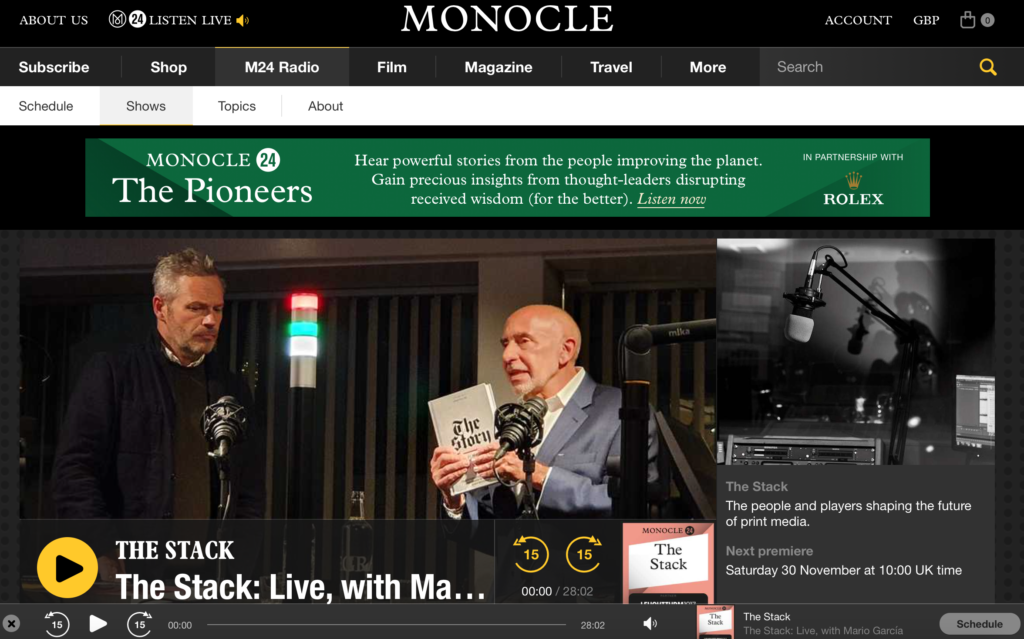
This episode of Monocle’s The Stack was recorded live during the launch of my book, The Story, in Zurich, November 20 before a live audience. Tyler Brulé and I talk about the state of the media today, the makings of The Story, as well as the meaning of doing print happily in the mobile first era. Tune in here:
https://monocle.com/radio/shows/the-stack/378/play/
From Monocle Weekend
THE INTERROGATOR / EDITION 30
https://monocle.com/minute/2019/09/21/
Mario García
Editorial consultant Mario García has advised the most important newsrooms in the world on design – and how best adapt to a digital transition. More than 700 publications, from The Wall Street Journal to the South China Morning Post, have received his strategic steer. Other than being an adjunct professor at Columbia University’s School of Journalism, he also runs his own consultancy firm: García Media. Nowadays his speciality is how digital devices influence narrative structure and consumption; his latest book, The Story, was written specifically to be read on a phone. Here, though, he confesses to a few analogue pleasures.
What they are saying about The Story!
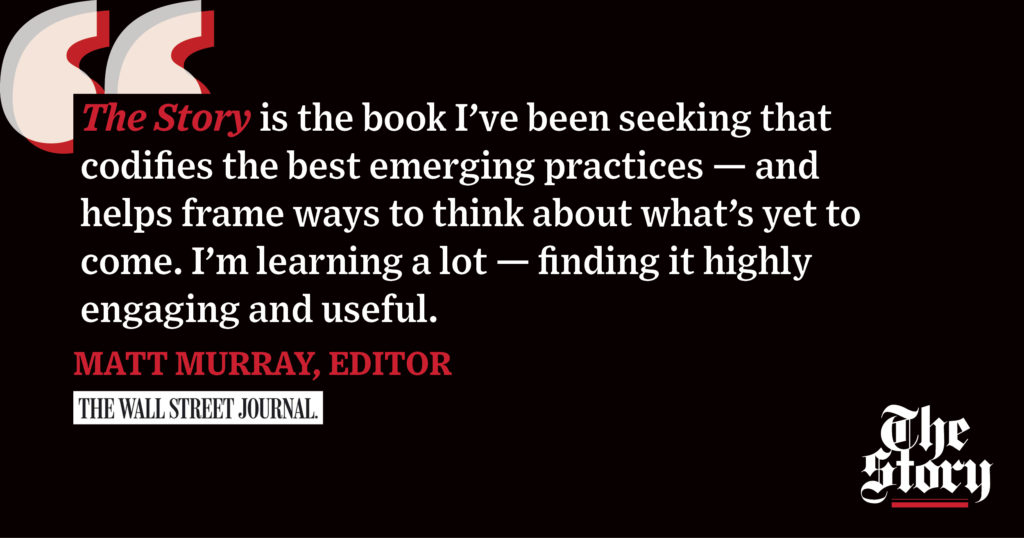
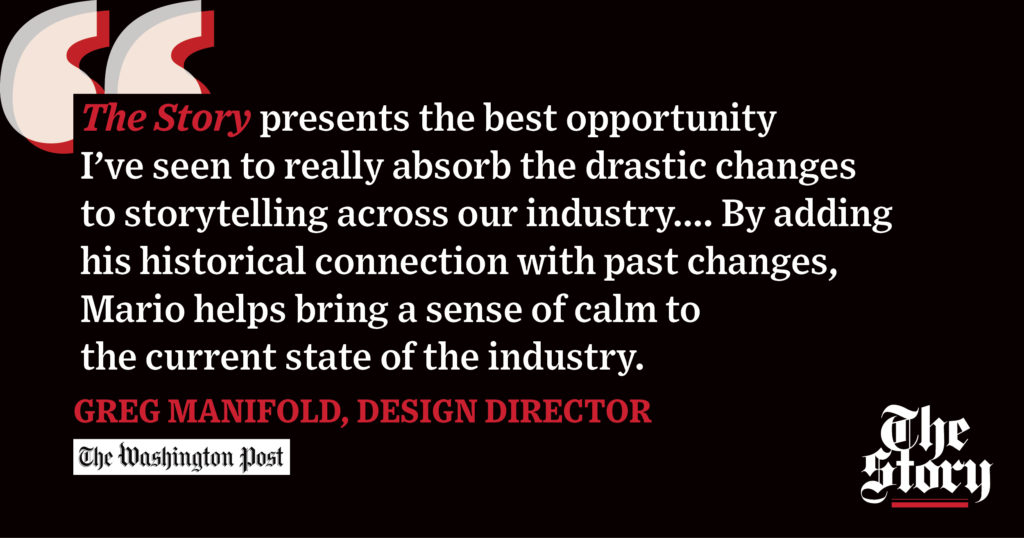
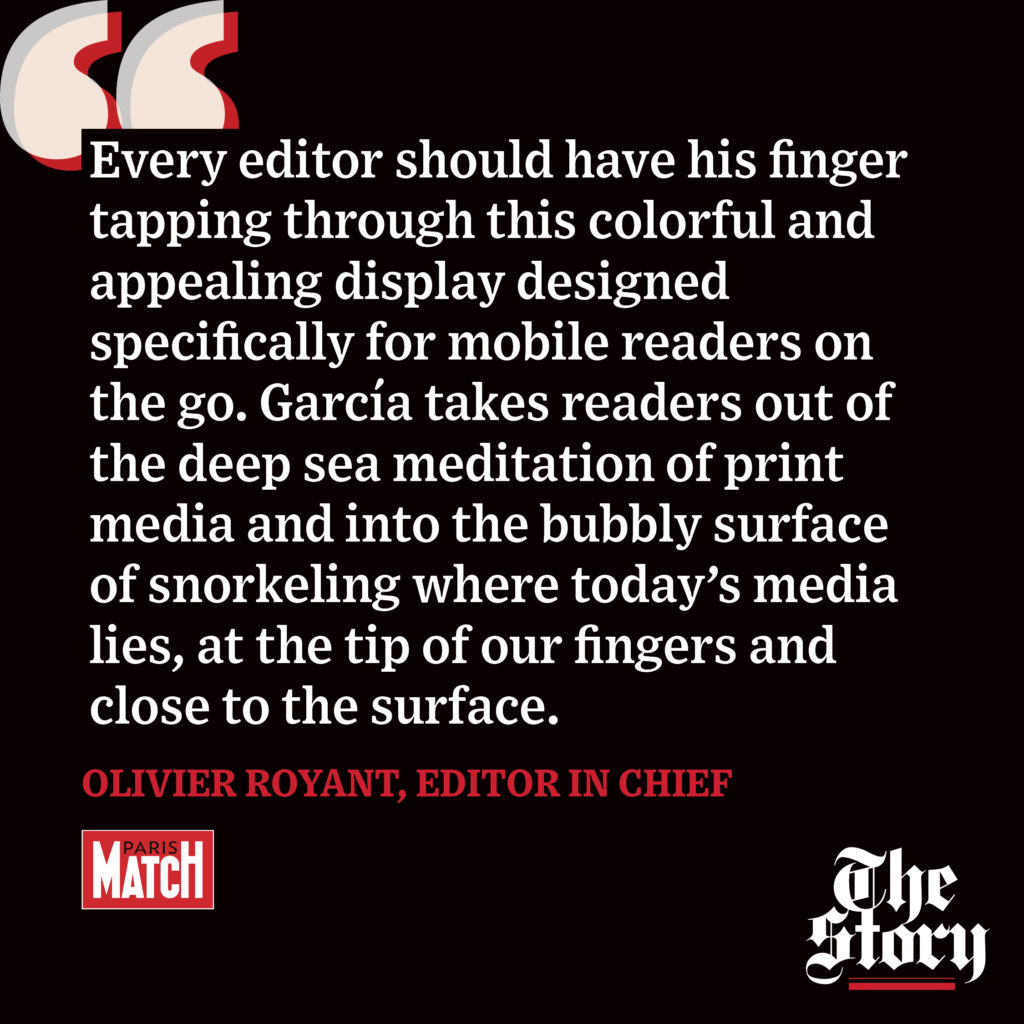
The Story is here!
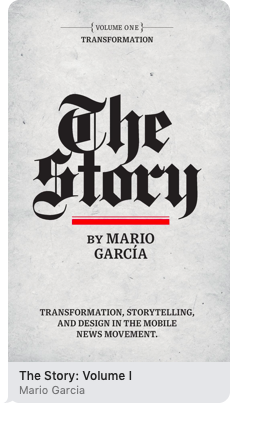
You can now download my new mobile storytelling book, The Story, from Apple Books at $6.99
This is Book 1 of a Trilogy! The other two books coming soon.
https://books.apple.com/us/book/the-story-volume-i/id1480169411
The newspaper remains the most powerful source of storytelling on the planet. But technology threatens its very existence. To survive, the Editor must transform, adapt, and manage the newsroom in a new way. Order The Story by Mario Garcia, chief strategist for the redesign of over 700 newspapers around the world.
My chat with in Monocle Radio
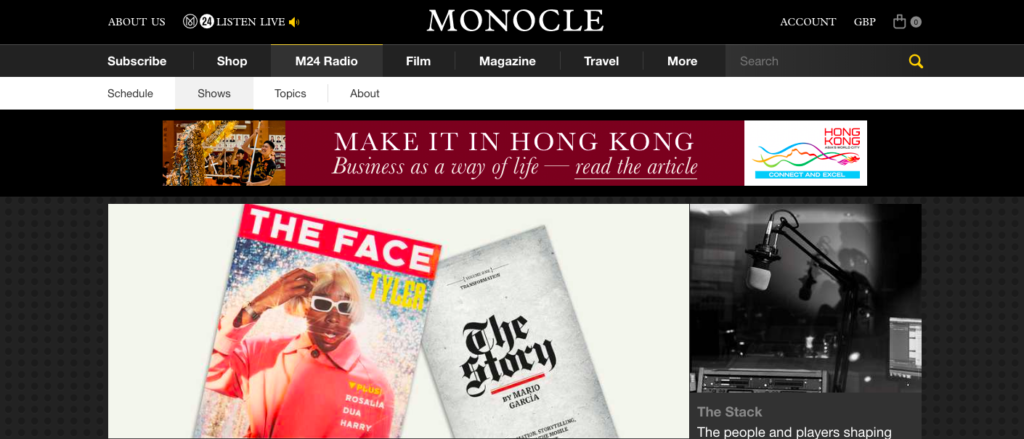
Listen to my chat in Monocle Radio’s The Stack: Latest episode‘The Face’ and ‘The Story’:We welcome the return of the print version of ‘The Face’ and talk to legendary newspaper designer Mario Garcia about his latest book, ‘The Story’.
https://monocle.com/radio/shows/the-stack/368/play/
My interview with CNN en Español
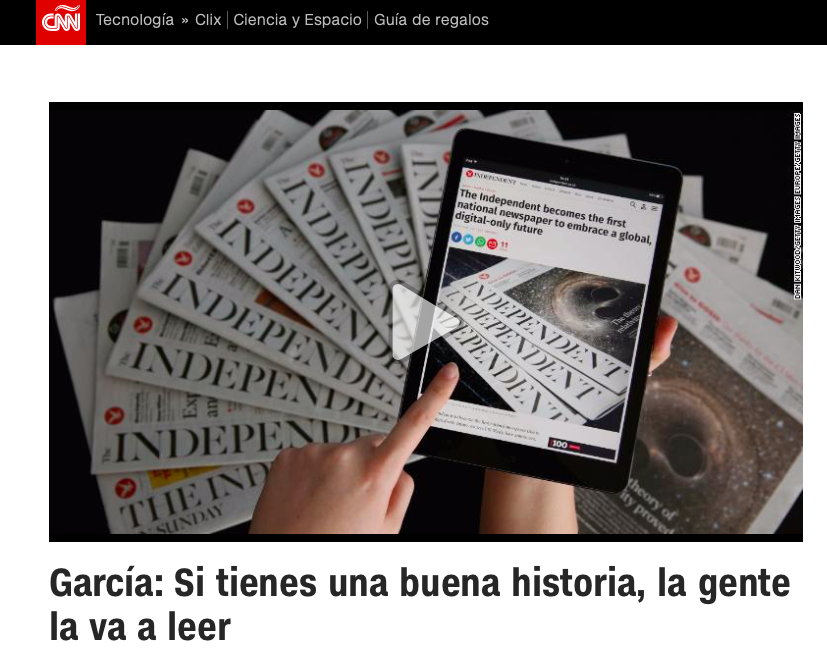
I was a guest in the program Encuentro, hosted by Guillermo Arduino daily at CNN en Español. The interview was about how we read on mobile devices and my introduction of my new mobile storytelling book, The Story, to a Spanish-language audience.
Mario’s speaking engagements
March 13, 2020
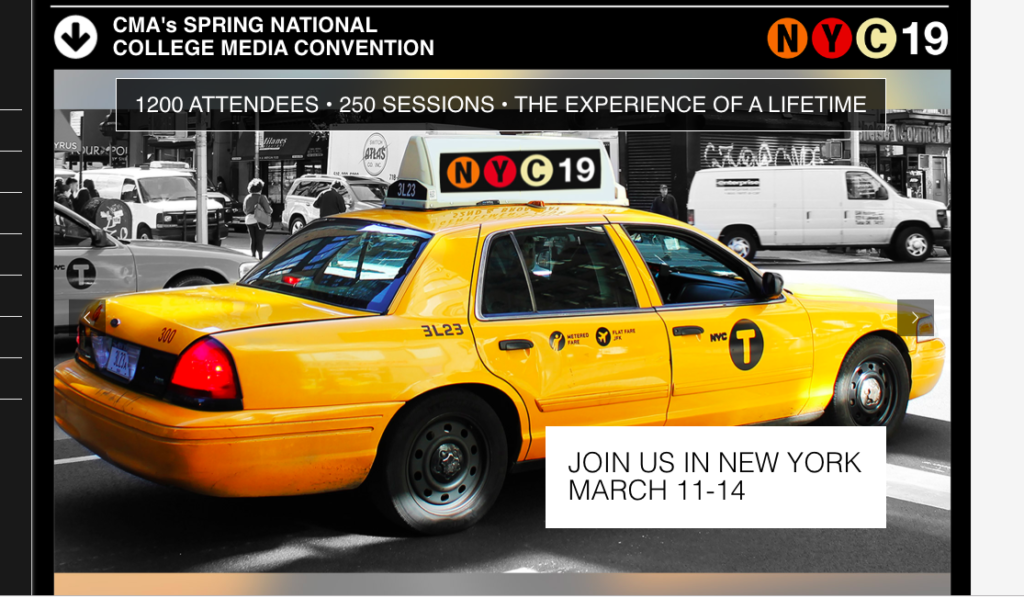
Keynote presentation at the National Media College Association Spring Convention, New York City, NY>
Order print edition of The Story
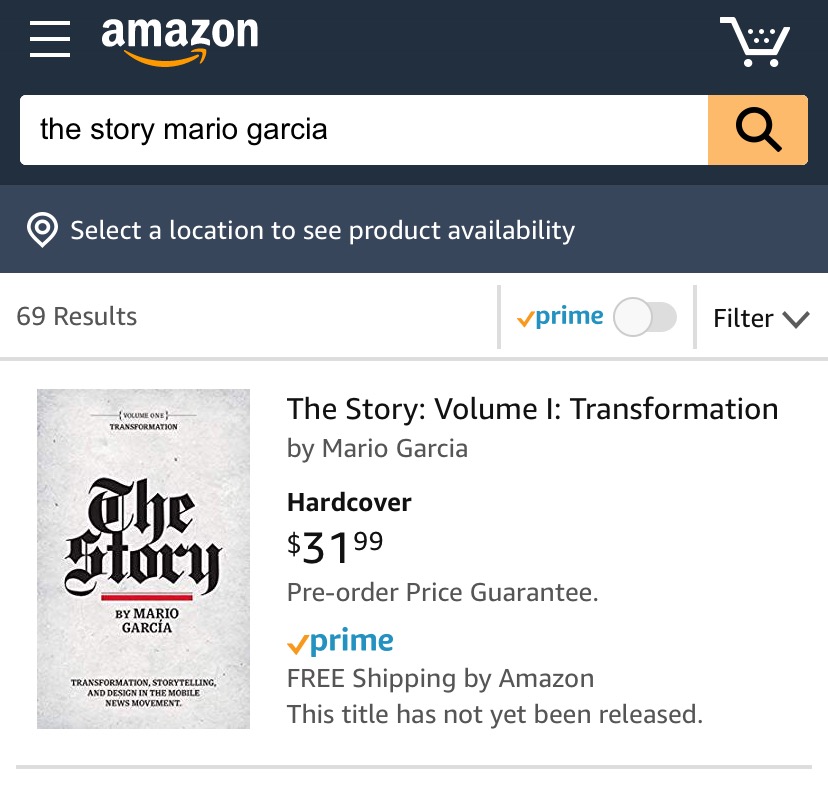
You can order the print edition of my new mobile storytelling book, The Story, from Amazon already here:
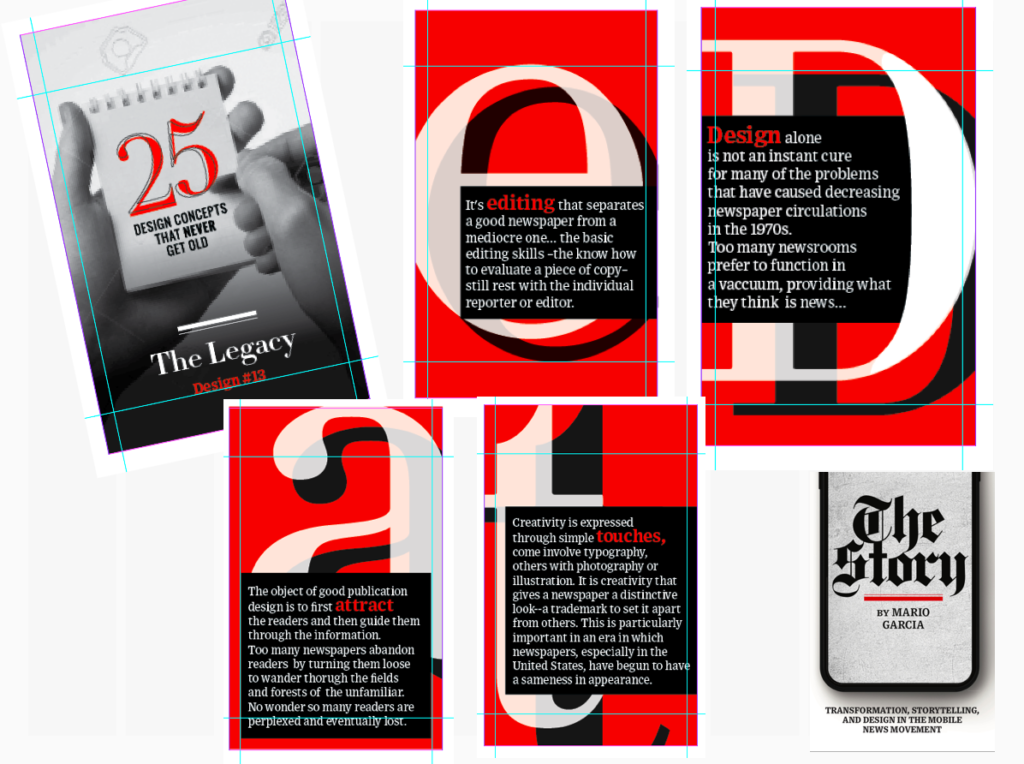

An interview of interest
http://www.itertranslations.com/blog/2019/3/11/fd60ybflpvlqrgrpdp5ida5rq0c3sp
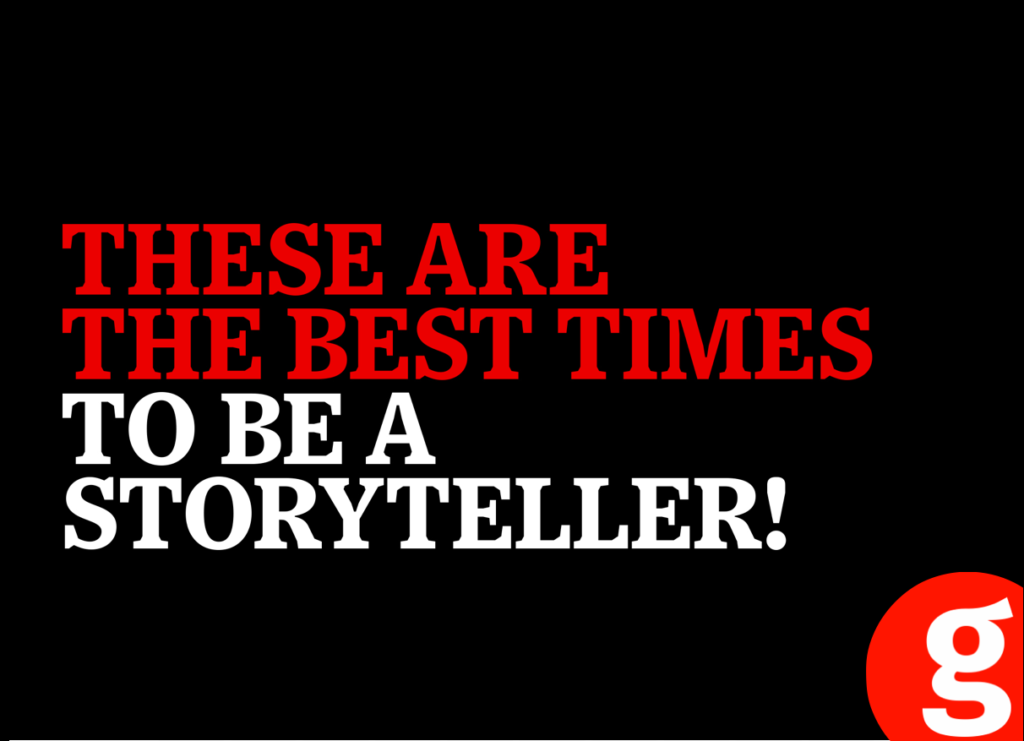
TheMarioBlog post # 3168
